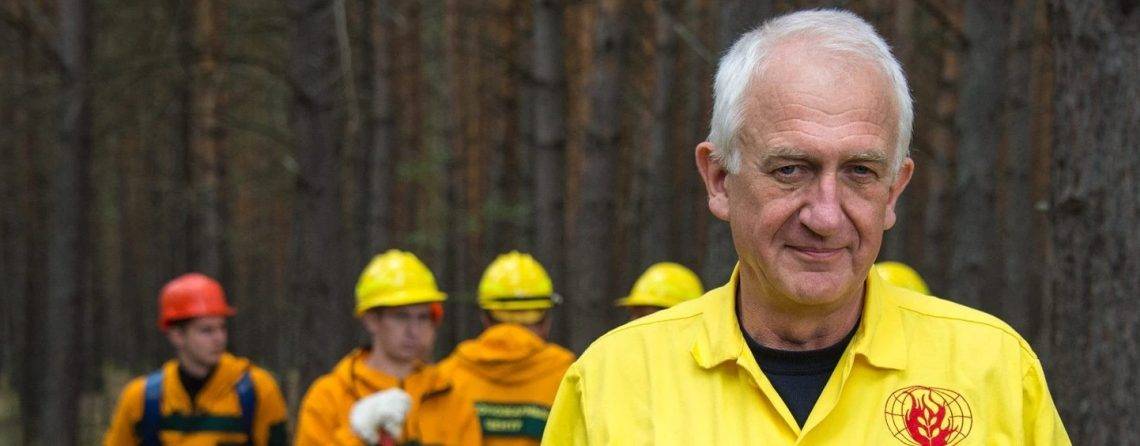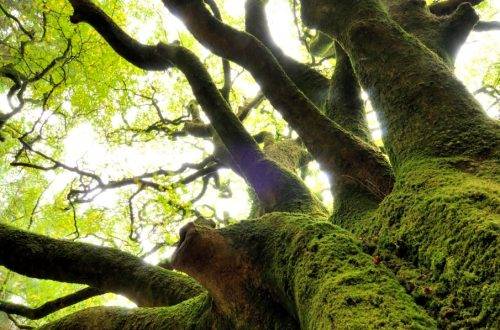
Fire ecologist: “If fire eats into deadwood layers, we have a problem”
The forest fire in Saxon Switzerland is in its third week. Hundreds of firefighters continue to extinguish embers. Rain is not in sight.
Professor Johann Georg Goldammer is a fire ecologist and heads the Center for Global Fire Monitoring in Freiburg im Breisgau. His team is currently on duty with the extinguishing tank in Grunewald. He also observes the fire in Saxon Switzerland.
Question: In the case of a forest fire in Saxon Switzerland, the embers are still particularly dangerous. Professor Goldammer, where do you see the reasons for this?
Johann Georg Goldammer: We don’t only have this issue in Saxon Switzerland. We also saw it with the fires in the district of Nordsachsen, where we were deployed with the fire fighting vehicle, about ten days ago near Torgau. We saw that this problem also arises there, that we have a very large amount of dead wood in very neglected pine stands. And as a result, we have a fire load in the forests that we didn’t have 30 to 40 years ago. If the fire now eats into these strong layers of dead wood, we have a problem.
The consequences of the fire are different today than they were in the past. Those who know the pine forests in Saxony and Brandenburg from the past, who know that the forests were thinned very intensively for firewood, pulp production, wood chips and so on. And that then in the shelter in the pine forests where grass grew, fires ran through again and again. But: the pines, they can tolerate the fire, a light grass fire.
Now we have a different situation: when the fire runs through the forest, it eats into the dead wood, into the root area, into the base of the trunk. And then we have a total loss. However, when we go into natural forests, for example in landscape protection, nature conservation or national parks, part of the objective is to leave dead wood in order to create habitat for certain animal and plant species.
So biodiversity on the one hand, but with it an increased risk of fire on the other?
That’s the way it is. And before we get into a really big religious war, we simply have to find solutions here that are possible in the spatial arrangement of such forest areas. Certain zones are identified in which deadwood is actually necessary. And in other areas, intensive forest care and intensive forestry are practiced.
This is what has brought us forward in forestry over the last 200, 250 years, especially with regard to the very productive forests in Germany. The forest is a supplier of renewable raw materials, be it wood for building and thus also for storing carbon, or pulp production and pellets and wood chips for the supply of renewable energy. You have to divide that up a bit, you can’t achieve everything in the same area.
In Saxon Switzerland, of course, it’s like this: we have a real recreation area there, and you don’t want too much intensive forestry there. But doing nothing and letting things go is dangerous, and we see that today.
In order to be able to fight forest fires more quickly in the future, there are discussions about cutting aisles. What do you make of it?
You can do it by designing the forest and the forest landscape in such a way that you don’t have to clear such areas. We call these corridors or buffer zones, where the forest is very thinned out. This can be very aesthetic, as the closed forest becomes a forest fire barrier, which consists mainly of individual trees. By the way, we have had that in Germany in the past. In the Middle Ages there were many such open forests where forest grazing also took place. There are still remnants of it today.
They were characterized by lonely, strong, deep-rooted trees, and beneath them the cattle – sheep, goats, pigs, and also cattle – grazed. The foresters then pushed them out of the forest. And today it is still the case that we see that the topic of forest pasture is reluctant to be discussed. On the other hand, in other countries around the world, we see that it works brilliantly. And I think we need to look a little more carefully.
There is forest conversion as a long-term solution, but of course it takes time. American red oaks are also being discussed for this, similar to those in our beech forests. Is that a possibility where you say we have to work in parallel?
That is exactly right. There are old beacons of hope, such as the beech, which has been said to be a species of tree that will replace the coniferous tree population. And we are now seeing that the beeches are suffering greatly due to the drought and heat stress. we know n not yet exactly what tree species this future climate can support.
But then back to Saxony again. We have a lot of pine forest stands in the lowlands. The pines are actually native to a region where they grew up in a very extreme continental climate and formed forests there – open forests where the trees are much less dense. And if you imitate that, then you can convert these existing pine forests that we have here in parallel with the search for new tree species. You should do both at the same time.




